- Home
- Orhan Pamuk
Istanbul Page 31
Istanbul Read online
Page 31
I’d walk down to Beşiktaş and all the way along the Dolmabahçe Palace walls as far as the stadium, as far as the doltnuş stop. I liked walking along these high thick old mossy palace walls at night. I would feel that energy of the anger pulsating in my forehead getting more violent by the minute until I got to Dolmabahçe, and then I’d go up an alley and be in Taksim in twelve minutes.
“When you were little, even when things were at their worst, you were always smiling, joyful, optimistic—oh, you were such a sweet child. Everyone who saw you had to smile. Not just because you were cute, but because you didn’t even know what sadness was. You were never bored; even at the worst times you’d just invent something and play happily for hours; you were always so cheerful. For someone like this to become a troubled, miserable artist who is always bowing to the rich—even if I weren’t your mother, I couldn’t bear it. That’s why I want you to listen to me carefully and not take offense at what I say.”
On my way up to Taksim, I’d stop for a moment to look at the lights of Galata in the half-dark view, and then I’d head for Beyoğlu to spend a few minutes browsing through the bookstalls at the beginning of İstiklâl Avenue, and after that I’d stop for a beer and vodka in one of those beerhalls where the television drowns out the noisy crowd, and smoke a cigarette, as everyone else was doing (I’d look around to see if there happened to be any famous poets, writers, or artists sitting nearby), and when I felt I was attracting too much attention from all those mustachoied men—because I was looking around me, and alone, and had a child’s face—I would go out again to mingle with the night. After walking down the avenue for a little, I’d head into the back streets of Beyoğlu, and when I had reached Çukurcuma, Galata, Cihangir, I would pause to gaze at the halos of the streetlamps and the light from a nearby television screen flickering on the wet pavements, and it would be while peering into a junk shop, a refrigerator that an ordinary grocer used as a window display, a pharmacy still displaying a mannequin I remember from my childhood, that I would realize how very happy I was. The sublime, dizzying, pure anger I felt right now at listening to my mother would leave me after an hour of wandering the back streets of Beyoğlu—or should I go to Üsküdar, or try the back streets of Fatih?—wherever I went, as I got colder and colder, I’d be warmed by the furious flame of my brilliant future. By then my head would be light from the beer and the long exertion, and the mournful streets would seem to flicker as in an old film, a moment I would want to freeze and hide away—the way I used to hide a precious seed or a favorite marble in my mouth for hours on end—and at that same moment I’d want to leave the empty streets and return home to sit down at my desk with pencil and paper to write or draw.
“That painting on the wall over there—Nermin and Ali gave it to us as a wedding present. When they got married, we went to see the same famous painter to see if we could buy one of his paintings for them in return. If you could have seen how thrilled Turkey’s most famous artist was that some people had finally turned up at his door to buy a painting, or what ridiculous airs he put on to hide his pleasure, or how he practically swept the floor with his bowing as we left with his painting in our hands, or how unctuously he bade us farewell, you wouldn’t wish becoming a painter on anyone in this country, my son. That’s why I’m not telling anyone you’ve abandoned your studies to become an artist. Those people you’ve just denounced as birdbrains, one day you’ll have to sell them paintings. When they find out you’ve blackened your future—your whole life—by abandoning your studies—yes, they’ll buy one or two paintings from you, just to be charitable, just to make me and your father look small, or maybe they’ll feel sorry for you and want to give you a little money. But they certainly won’t let any of their daughters marry you. That sweet girl you painted, why do you think her father packed her off to Switzerland? In a country as poor as ours, around so many weak, defeated, semiliterate people, to have the sort of life you deserve and not get crushed, to be able to hold your head high, you have to be rich. So don’t give up architecture, my son. You’ll suffer terribly if you do. Look at Le Corbusier. He wanted to be a painter, but he studied architecture.”
The streets of Beyoğlu, their dark corners, my desire to run away, my guilt—they were all blinking on and off like neon lights in my head. I knew now that tonight my mother and I wouldn’t have our fight. In a few minutes I would open the door and escape into the city’s consoling streets; and having walked away half the night, I’d return home and sit down at my table and capture their chemistry on paper.
“I don’t want to be an artist,” I said. “I’m going to be a writer.”
ABOUT THE PHOTOGRAPHS
I relived much of the excitement and puzzlement of writing this book while choosing the photographs. Most were taken by Ara Güler; during my time searching in his home-studio-archive-museum (in Beyoğlu, where he has spent most of his life), I came across many treasured but long-forgotten images (for example, the tugboat on this page with its funnel lowered to pass under the Galata Bridge), as beguilingly familiar to my adult eye as they were strange. When I happened on the view of the snow-covered Galata Bridge on this page it was as if my own memory had been projected onto a screen; there were other moments like that, when I would be seized by a frenzy to capture and preserve this dreamscape or to write about it. Ara Güler’s vast and seemingly endless archive, while first and foremost a tribute to his art, is also a superb record of Istanbul life from 1950 to the present day and will leave anyone who knew the city during those years drunk with memories.
The following photographs are by Ara Güler: this page, this page, this page, this page (top and bottom), this page (bottom), this page (bottom), this page (bottom), this page, this page (right), this page (top and bottom), this page (top), this page, this page, this page, this page, this page, this page, this page, this page, this page, this page, this page, this page, this page, this page, this page, this page, this page, this page, this page, this page, this page, this page, this page, this page, this page, this page, this page, this page, this page, this page, this page, this page, this page, this page, this page, this page, this page, this page, this page, this page, this page (top), this page (bottom), this page, this page, this page, this page, this page, this page.
In the archives of Selahattin Giz (born 1912), exploring his photographic record of the streets of Beyoğlu (begun while still a student at Galatasaray Lisesi and continued during his forty-two years at Cumhuriyet) was like gaining entry to a private world of enchantment. Perhaps this is because, as his photographs show, Giz loved the city’s empty, lonely, snowy streets as much as I do: this page this page, this page, this page (top and bottom), this page (top), this page, this page (left), this page, this page, this page, this page, this page (bottom), this page, this page, this page, this page, this page, this page, this page, this page, this page, this page, this page, this page, this page, this page, this page, this page, this page, this page, this page, this page, this page (top), this page.
I would like to thank the Istanbul City Council for permission to include from their collection the photographs of another news photographer, Hilmi Şahenk: this page, this page (top), this page (top), this page (top), this page, this page, this page, this page, this page, this page, this page, this page, this page (bottom), this page, this page (bottom), this page (top).
The photograph of Hagia Sophia on this page was taken by James Robertson in 1853.
The photographs on this page, this page, and this page (bottom) were taken by the Abdullah Brothers, who ran a photographic agency in Istanbul during the last quarter of the nineteenth century.
While researching this book, I discovered that the postcard artist Max Fruchtermann also used some of the Abdullah Brothers’ photographs. The illustrations on this page (bottom), this page (top), this page, this page, this page, this page (top), this page, this page, and this page are taken from Max Fruchtermann’s postcards, as is the city panorama on this page–this page, a five-postcard stone pr
int following the fashion of the time.
The old photographs on this page, this page, this page, this page, this page, this page, this page, and this page came to me secondhand and my efforts to find out who took them have not been successful.
I would like to thank the Foundation le Corbusier for the drawing by Le Corbusier on 38.
The engraving on this page is by Thomas Allom, the painting on this page is by Hoca Ali Riza, and the painting on this page is by Halil Pasha.
The enlarged details on this page–this page and this page are by Melling.
As I describe in Chapter 28, the photographs of Beşl;iktaşl; and Cihangir between this page and this page were taken by me; I still like the picture I took as a fifteen-year-old boy of the cobblestone alley seen from Cihangir (this page).
I would like to thank Esra Akcan and Emre Ayvaz for their careful editing and helpful comments.

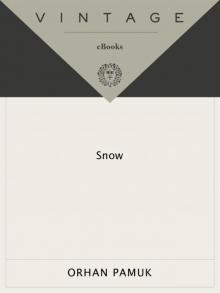 Snow
Snow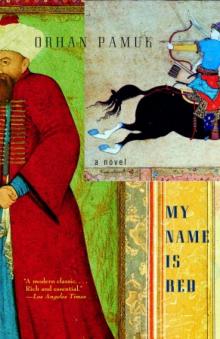 My Name is Red
My Name is Red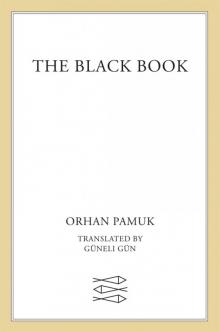 The Black Book
The Black Book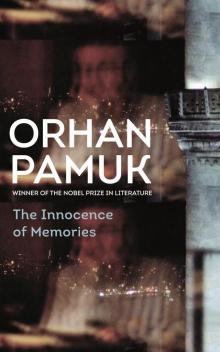 The Innocence of Memories
The Innocence of Memories The White Castle
The White Castle Other Colors
Other Colors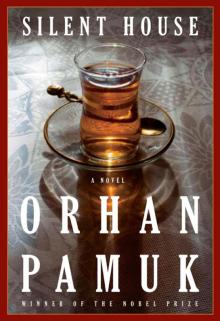 Silent House
Silent House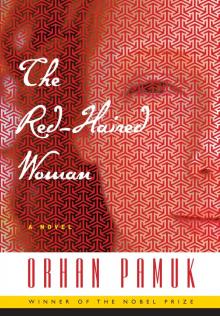 The Red-Haired Woman
The Red-Haired Woman The Museum of Innocence
The Museum of Innocence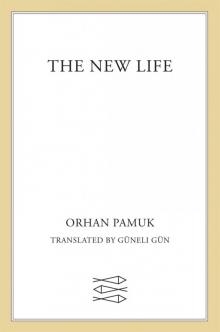 The New Life
The New Life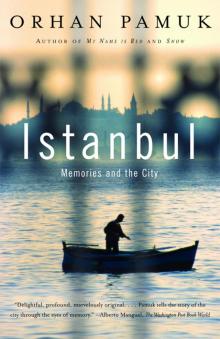 Istanbul
Istanbul